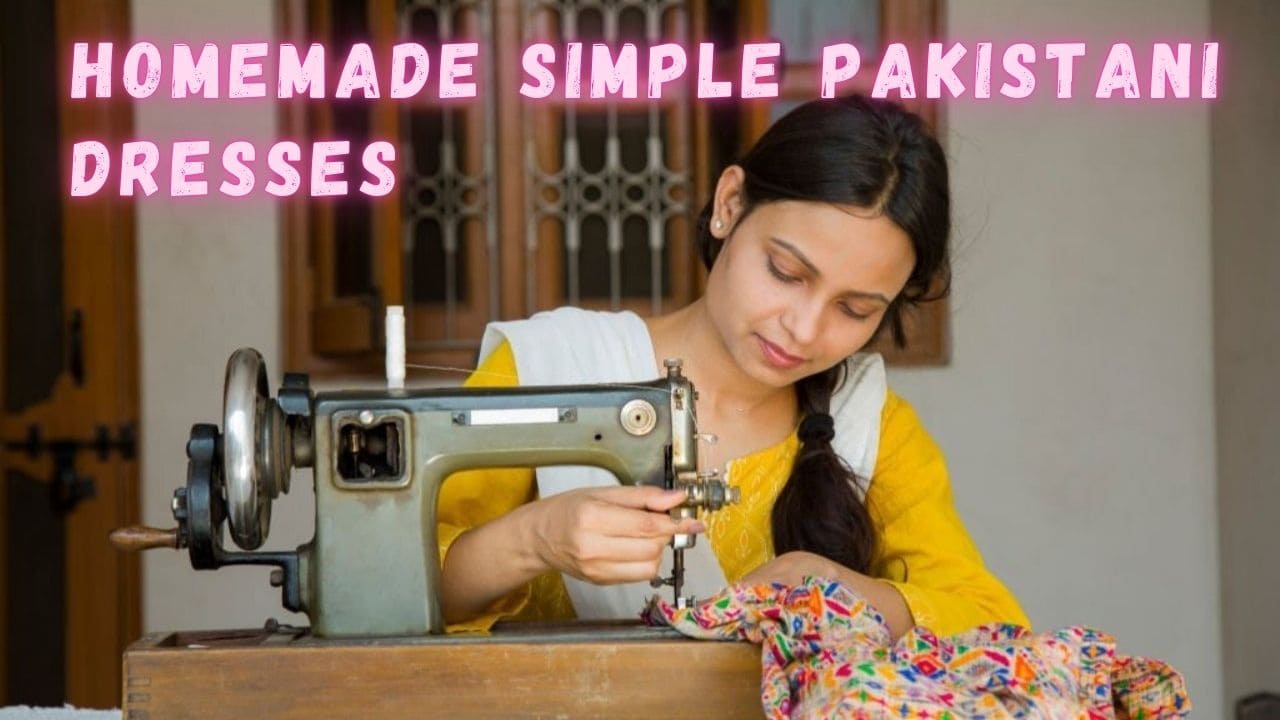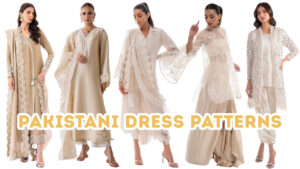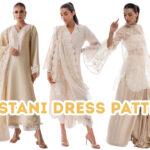Introduction
Women’s fashion at Pakistani Dresses India is certainly fascinating. Have you ever admired the beauty of Pakistani dresses but thought that they were too luxurious to own? If so, you should be very excited to hear that. With our step-by-step guide to Homemade Simple Pakistani Dresses, you can certainly design and sew these simple yet sophisticated garments to your own liking. Stitched Pakistani Dresses compliments compilation of traditional South Asian womenswear with sheer pleasure of crafting one’s own garment.
How great would it be to own ‘your’ self made Mehndi dress or Haldi outfit? The kind of dress that represents you in its every detail; in its design, cut, and the fabric used.
Homemade Pakistani dresses do not only serve to save money but also allows for more customization and enjoyment. Every detail on that dress you are making is attached to a particular emotion. Don’t forget the pride that comes with wearing a self-made Pakistani dress. You know that you are wearing a piece of art crafted by your skill.
In this article, we set your expectations by stating that we will first give you an overview of what to expect, we will from start help you how to dress well, pay close attention to measurements, and choose colours that will match your vibe. Furthermore, we will first teach you how to sew and give you suggestions on how to manage different kinds of fabric. Then we will go through the various ways of using embellishments to improve and transform the garments into sybaritic pieces of art.
Be it a classic A-line shirt or a nifty salwar kameez or a pretty Anarkali. We will be there for you. You can consider us as your tailors and we will support you in each and every aspect of this dress making adventure until all your homemade simple Pakistani dresses meet your expectations. The charm of homemade simple Pakistani dresses is in their final form, however it is also in their making. Understanding the various intricacies and elements of a sewing machine can be a very fascinating journey, and the best part is visualizing your dresses fashioned from your creativity.
Therefore, go on, wipe the dust off your machine, or pick up a needle and thread – get ready to do the exciting work of making homemade simple Pakistani dresses which will give you a confident look.
Let’s squeeze that creative juice of yours and get on to making some beautiful homemade simple Pakistani dresses. Ready? Let’s go.
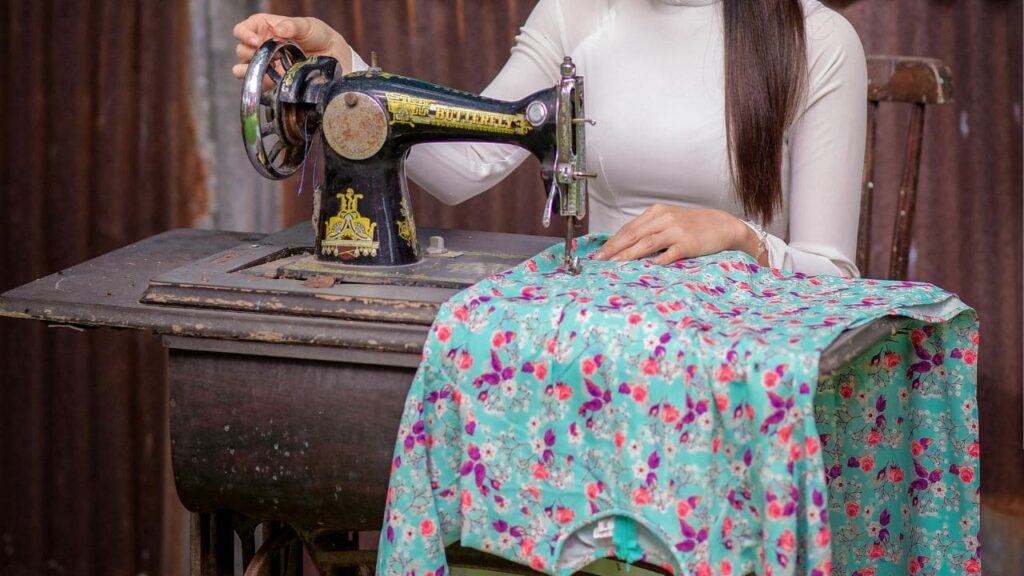
The Appeal of Homemade Simple Pakistani Dresses
There is a certain excitement associated with designing and making your own dresses that goes beyond simply wearing them. There we will analyze different factors that have made the simple dresses popular with the Pakistani couture and the local DIY admirers. The idea of designing your own dress and the bundle of benefits that go with it, such as drawing costs and ensuring originality, coupled with sense of crafting are unrivaled.
Personalization
Homemade simple Pakistani dresses offer the wonderful advantage of tailor-made fashion. Unlike store-bought garments where standard sizing may not always suit individual body shapes, crafting your own dress allows you to achieve the perfect fit. You can easily modify patterns to highlight your best features, maximizing comfort while enhancing the overall appearance.
Cost-effectiveness
So here’s the thing, sometimes fashion does require a big budget. But with easy simple Pakistani dresses, you can dress fashionably just the way you like without spending a fortune. You do all the work in finding the right fabrics and materials minus the cost of the label and you have beautifully crafted outfits for much less.
Uniqueness
Customizing dresses especially Pakistani dresses is one of the most enthralling parts; designing something that’s only yours. You can have a say in the fabrics, the patterns, the embellishments, and thus you can even create those designer pieces which are capable of earning you all the attention. Please let your passion do the work as it can perfectly manifest through the way your final outfit looks like.
Creative Expression
Dressmaking is itself a form of art and every stitch adds a piece of artificial creativity to it. And the cut pasting the fabric, to layering it over the stitches is equally thrilling. Be it a classic look or contemporary, when it comes to making homemade simple Pakistani dresses, you can try out almost any sort of looks.
Emotional Fulfillment
What is also notable is that there’s an innate feeling of honor and comfort that is tied with donning something that you made with your hands. When you finish a homemade dress, there is this joy that runs deep – you created the dress from scratch. The emotional attachment to dressed designed by self is also very gratifying.
Sustainable Fashion
The task of sewing one’s garments complements the eco-friendly ideals as you are at the heart of creation instead of looking for retail outlets. It is a positive and ecologically sound practice that entails the utilization of fabric off-cuts as well as upcycled decorations – homemade simple Pakistani dresses found that practice to be useful.

Confidence Booster
Wearing a dress you’ve crafted can be an empowering experience. Knowing what you’ve made is skillful and beautiful gives you extra attachment to your final product while boosting self-confidence. Homemade simple Pakistani dresses become a testament to your abilities and creativity.
The appeal lies not only in practical custom-fit fashion but also in emotional fulfillment and creative freedom they provide. By wearing a dress you’ve made yourself, you carry the essence of personality and artistic expression while engaging in sustainable practices that make it a responsible choice for both style and environment.
Essential Tools and Materials for Homemade Simple Pakistani Dresses
As a starter, one has to properly prepare the dressing making materials plus tools because these items will assist in making the work less tedious and more interesting.
1. Sewing Machine or Needle and Thread
A sewing machine can significantly speed up the sewing process while providing neat stitches; ensure it’s in good working condition set up in a well-lit area. Alternatively, if hand-sewing or lacking access to a machine, all that’s needed are quality sewing needles along with various threads matching fabrics.
2. Fabric Scissors
Invest in sharp fabric scissors designated solely for cutting fabric; blunt scissors can cause uneven edges making cutting difficult.
3. Measuring Tape and Ruler
A flexible measuring tape is essential for taking accurate body measurements while determining required lengths for dress patterns; having a ruler will assist in marking precise lines on fabric.
4. Pins and Pin Cushion
Use straight pins to hold fabric pieces together during sewing; they help keep fabric in place ensuring accurate seam alignment. A pin cushion or magnetic holder keeps pins organized for easy access.
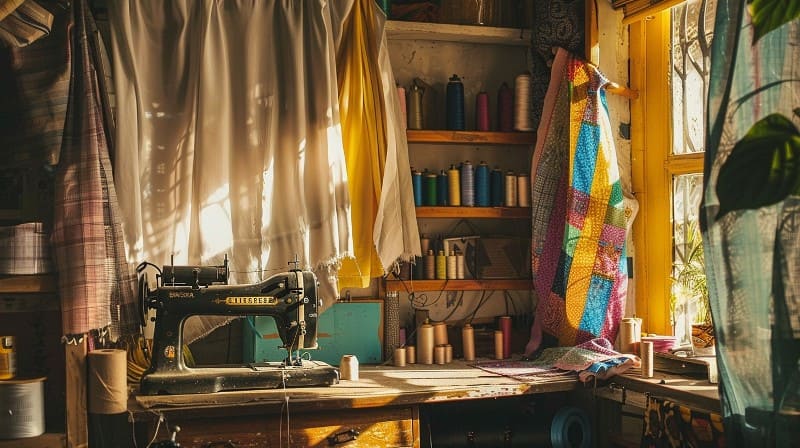
5. Seam Ripper
Mistakes happen even when trying to avoid them; here’s where a seam ripper becomes invaluable for opening stitches without damaging fabric.
6. Chalk or Fabric Marking Tools
Marking tools like tailor’s chalk or washable fabric markers help transfer pattern markings onto fabric without leaving permanent stains.
7. Iron and Ironing Board
Pressing fabric before sewing ensures neat seams; an ironing board along with iron are useful tools for this purpose.
8. Fabric Selection
Choose fabrics aligning with desired style; options include cotton, lawn, chiffon, silk, organza, georgette, etc. commonly used in Pakistani dresses considering comfort drape season when selecting fabric.
9. Matching Thread
Select high-quality threads matching fabric color; using matching threads gives stitches blending seamlessly into fabric.
10. Interfacing & Lining (Optional)
If pattern requires extra support consider using interfacing for collars cuffs waistbands while lining enhances comfort providing dimensional stability inside garment.
11. Notions & Embellishments (Optional)
Depending on design may need buttons zippers hooks closures; if interested embellishing dress consider stones beads sequins Zari threads Latkans uplift final look outfit.
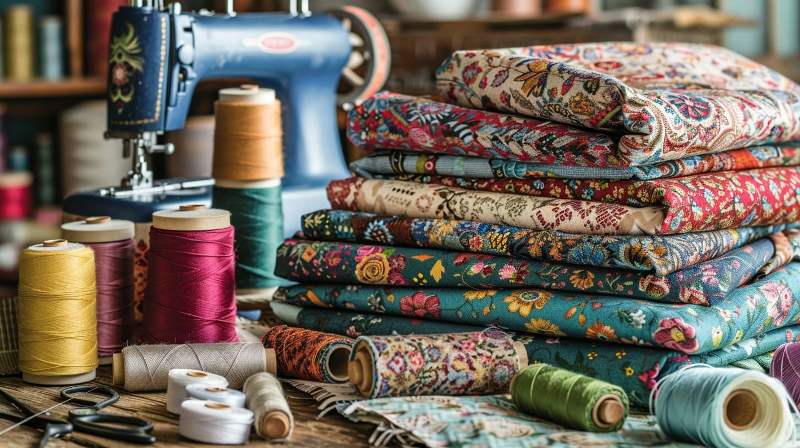
You can find suitable beginner kits along with all these essentials at Amazon.in.
Having these essential tools/materials at hand makes dress-making journey effortless; as progress continues realize need more tools improving finishing quality homemade simple Pakistani dresses.
Choosing Patterns for Homemade Simple Pakistani Dresses
Selecting right dress pattern is first step towards creating homemade simple Pakistani dress; numerous options available nowadays make it important choosing pattern matching style skill level occasion intended outfit for. Here we’ll discuss some popular patterns best suited beginners looking easy-to-make designs.
1. Straight-cut Kurtas or Tunics
Straight-cut kurtas/tunics are classic timeless patterns featuring straightforward silhouette minimal shaping making them relatively easy sew; evergreen pattern easily combined different necklines sleeve lengths hemline styles.
2. A-line Kameez
A-line Kameez offers comfort suitable choice casual wear semi-formal occasions characterized fitted bodice gradually flaring out from waist hem resembling shape letter “A.”
3. Salwar or Trouser Styles
Salwar/trouser styles offer variations lower garment allowing choice between straight-cut trousers flared palazzos traditional salwars paired various shirt styles offering opportunities mixing matching.
4. Basic Anarkali
Anarkali pattern embodies beauty elegance perfect wedding ceremonies events festive occasions featuring fitted bodice flowing flared skirt creating beautiful silhouette.
5. Asymmetrical Hemlines
For those seeking fusion consider patterns asymmetrical hemlines design variations giving attractive look traditional dresses incorporated shirts kurtas Anarkalis allowing play different lengths.
6. Front Slit Designs
Front slit designs provide unique appearance choosing depth depending comfort level occasion used making kurtas shirts Anarkalis more appealing trendy look.
7. Wrap-style Dresses
Wrap-style dresses easy wear attractive various body types overlapping fabric layers secured ribboned ties buttons suitable beginners wanting try unique stylish patterns.
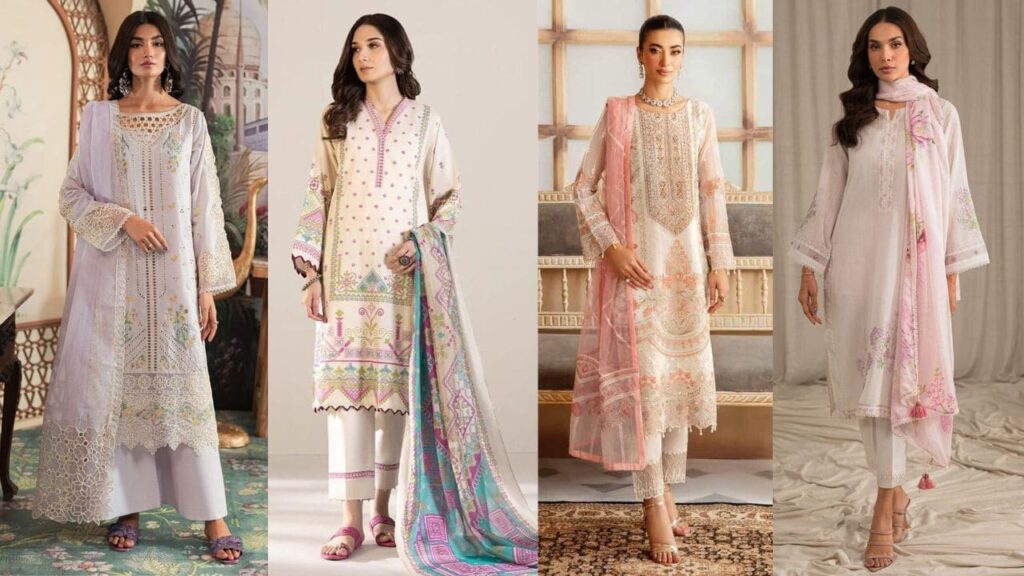
Selecting right pattern is essential creating homemade Pakistani dress matching style skill level whether going classic kurta intricate Anarkali remember customization embellishments make each uniquely yours so let creativity bloom don’t hesitate experiment different styles as progress on dressmaking journey!
Taking Accurate Measurements for Homemade Simple Pakistani Dresses
Accurate measurements are crucial for creating well-fitted comfortable homemade Pakistani dresses before cutting fabric starting sewing essential take precise body measurements ensuring perfect fit giving desired final look let us explain how take correct measurements:
1. Dressmaking Essentials
Before measuring ensure flexible measuring tape pen/pencil notebook/paper record measurements handy!
2. Wear Fitted Clothing
To obtain accurate measurements wear fitted clothing undergarments adding unnecessary bulk body shape.
3. Body Measurements
- Bust/Chest: Measure fullest part bust/chest ensuring tape parallel floor not too tight.
- Waist: Measure narrowest part waist usually above navel.
- Hips: Place measuring tape around fullest part hips keeping parallel floor.
- Shoulders: Measure across back edge one shoulder edge other ensuring tape straight not slanting.
- Back Length: Measure base neck desired dress length above knee below knee floor-length.
4. Sleeve & Arm Measurements (if applicable)
- Sleeve Length: Measure shoulder point wrist arm slightly bent.
- Armhole Circumference: Measure around fullest part arm shoulder level.
- Bicep Circumference: Measure around fullest part upper arm.
5. Neckline & Collar Measurements (if applicable)
- Neck Circumference: Measure around base neck collar sits.
- Collar Depth: Measure base neck desired depth collar.
6. Optional Dress-specific Measurements
For patterns specific design elements like front slit asymmetrical hemline measure desired length features…
7. Tips Taking Accurate Measurements
- Stand naturally avoid sucking stomach pushing chest.
- Keep measuring tape snug but not too tight ensuring lies flat against body.
- Ask someone assist taking measurements especially back length shoulder width.
8. Record Labeling
Write down all measurements clearly label each corresponding body part (e.g., “Bust,” “Waist,” “Back Length,” etc.) double-check accuracy before moving on cutting fabric.
Taking accurate body measurements lays groundwork creating well-fitted beautiful homemade Pakistani dress proper measurements save time effort during process reduce chances alterations ensuring final dress fits beautifully maintaining good posture taking measurements don’t hesitate ask someone help if needed! With precise measurements hand ready move exciting next step – cutting preparing fabric stunning homemade simple Pakistani dress.
Cutting Preparing Fabric for Simple Homemade Pakistani Dresses
After taking accurate measurements next crucial step creating homemade simple Pakistani dresses cutting preparing fabric!

1. Gather Supplies
Make sure ready necessary tools materials cutting including fabric scissors measuring tape pins chalk fabric itself.
2. Prewash Fabric (If Required)
If washable consider prewashing before cutting eliminating shrinkage occurs after sewn ensuring final maintains shape.
3. Iron Fabric
Smooth wrinkles creases ironing low heat setting ensures flat even surface work with.
4. Lay Out Pattern
Carefully lay out dress pattern pieces fabric ensuring correctly aligned grainline direction threads ensuring hangs correctly worn.
5. Pin Pattern Pieces
Secure pattern pieces fabric using straight pins ensuring firmly place preventing unnecessary movement during cutting step.
6. Cut Fabric
Use sharp scissors cut along edges pattern pieces take time cut slowly ensure precise clean cuts if requires multiple layers cut through layers simultaneously maintain consistency.
7. Marking Notches Darts
Transfer any markings notches darts onto fabric using chalk markers helping alignment during sewing process.
8. Label Fabric Pieces
As cut each piece label accordingly use instructions separate paper note corresponds part dress (e.g., front back sleeves).
9. Prepare Interfacing Lining (If Used)
If requires interfacing lining cut following instructions interfacing gives shape firmness areas dress collars cuffs waistbands lining provides dimensional stability opacity inside garment.
10. Store Fabric Scraps
If leftover scraps after cutting store safe place potential use future projects small embellishments.
Organize Store: Keep all cut pieces interfacing lining together clean organized manner!
Carefully cutting preparing crucial step ensuring accurately cut ready assembly helping avoid errors achieving desired fit look homemade simple Pakistani dresses! With prepared labeled pieces well-prepared enter exciting phase sewing creative vision will come life!


